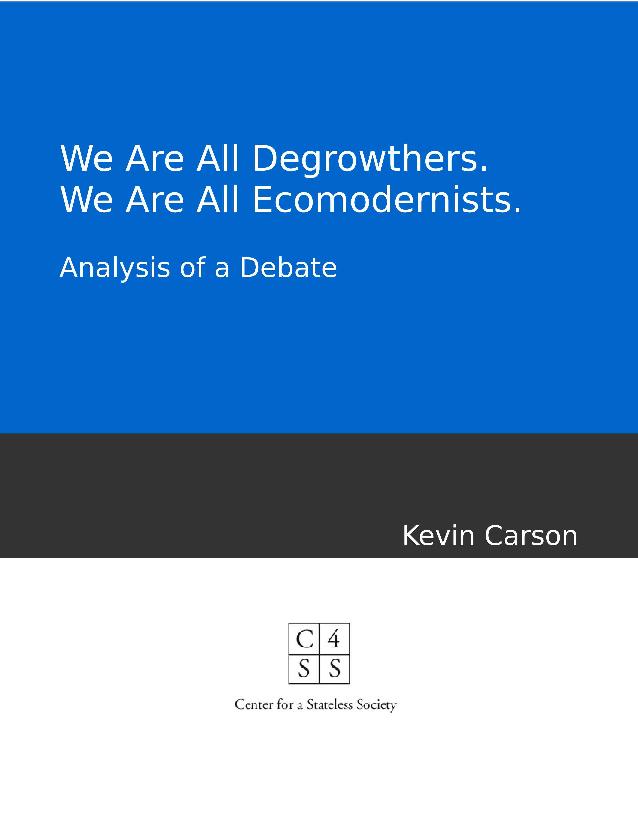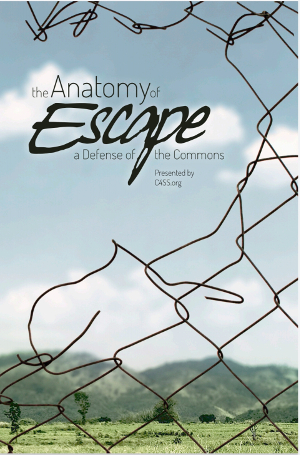“They’re even gassing children!”
A small affinity group of teenagers raced past me, all in black bloc, one member slowing down only to look at me. I had put my red bandanna away, soaked as it was in tear gas and pepper spray. What remained was a skinny thirteen year old kid in a bright yellow rainjacket my mom had forced me to bring.
I grinned to myself because I was no innocent. I had spent the whole day disdainful of the other protesters, sneering at the liberal speeches and inane placards, rolling my eyes at the naivety of the bloc during the fighting. N30 was my first major protest and I wanted more than anything to be above it. I originally went to Seattle more to observe the end of the world, than to participate. I did not expect us to win this climactic final battle against a horde of neoliberal institutions, intermeshed in imperialism and increasingly detached from anything like democratic checks and balances. I expected us to lose that fight.
I think we did lose that fight, actually. In any frank accounting, it wasn’t street protests that broke the WTO. The Doha round of talks stalled out years later thanks to a combination of resurgent nationalism in the US as George W Bush shifted imperialist strategies after September 11th and coalition work done between national governments in the global south that gave them leverage. There is simply no substantive causal link between these developments and the street protests we organized. Indeed what has been completely lost in retellings of The Battle In Seattle, is that weekend there was a sense of failure on the ground. “They’re still meeting! They busted through the blockades! A politician pulled a gun on my friend! Pulled a gun!”
The chief success of Seattle was a media victory. Anarchists became suddenly visible to the world, political positions that had been entirely suppressed from the public arena were suddenly visible and accessible. Countless anarchists I’ve known describe looking at the news reports of N30 and watching the world open up, their first glimpse that anarchists existed, that something like anarchism was a position even speakable, that resistance was possible. The befuddled and horrified establishment only added fuel to the flames, as in this on air exchange Richard Day transcribed in Gramsci Is Dead:
Reporter: ‘There are some people here, roaming about … well not exactly roaming, they seem organized. I don’t know who they are, they’re all dressed in black, they have black hoods on, and black flags … a flag with nothing on it.’
Anchor: ‘A flag with nothing on it?’
Reporter: ‘That’s right, it’s totally black.’
It is often said that the anarchist movement is bad at capitalizing on success. We are so used to defeat that we become adrift and confused when something starts to go our way. But in the aftermath of Seattle we realized the global media outrage at broken Starbucks windows was a massive boon and exploited it to the fullest. Tens of thousands if not hundreds of thousands of anarchists were created by those images, the myths and narratives that were spun and reproduced across the world. The black bloc finally entered the public vernacular and a massive activist infrastructure unfurled itself globally. Seemingly every town had an infoshop and an indymedia, creating a sense of unity and immediate visceral interconnection between anyone vaguely anti-authoritarian and leftwing.
This commonality was reinforced by the sheer unassailability of the existing institutions. While anarchism was the leading light and center of mass, the conflict was simple. There were the people in power and there was everyone else. There’s been a grassroots project of historical revisionism to refer to this movement, this moment, as “counter-globalization.” But the name most overwhelmingly used at the time was “anti-globalization.” And this sort of Turtles & Teamsters coalition building encouraged a lot of garbage. Wingnuts, nationalists, and opportunists abounded. While specifically anarchist spaces or those that utilized clear and strong points of unity avoided some of the worst, the next two decades involved a lot of scenes slowly and painfully digging out the trash that had been let in. Anti-semite conspiracy heads, broish misogynists, nationalists, and other creeping fash. Folks of younger generations frequently demand to know why we let some behavior slide or considered some positions tolerable. The answer is that many of us never liked that shit, but the narrative was one of unity and mass. We were impressed with our numbers in spectacles like Seattle, we were enraptured by democratic notions of The People rising up. Everyone on the bottom versus the few on the top.
A decade later this potent elixir would be distributed again by Occupy. A slightly different coalition. A new crop of entryists and monsters to be slowly and painfully weeded out for years to come. A burst of recruitment, this time largely without as wide of a movement base, because in most cities Occupy arose in a partially antagonistic relationship with the remaining activist/anarchist infrastructure from the anti-globalization era. New miniature scenes developed with their own sense of exploding growth. Within a year I was overhearing new people bragging that they “date back to Occupy.”
Mass is intoxicating. There’s no way around this. Our poor monkey brains are not shaped by evolution to accurately evaluate either the social danger posed by someone being mean in a comments section or the strength represented by sixty thousand people marching in a sea as far around you as your eyes can see. We are many, they are few. Seeing tens of thousands of people march beside you against a few hundred cops protecting a few hundred politicians and businessmen gives most an extraordinary high. I call this “inevitability poisoning” — the cocksureness that you’ve joined the winning side.
But the truth is we are few. Anarchist values are not popular. We are a radical bunch, taking things to the root, being consistent. It’s easy to briefly sell a fuzzy afterimage of anarchism when you speak in loose applause lines, but when you get to the heart most folks peel away. ‘Everyone’s already an anarchist because they don’t need cops to tell them how to order pizza in a group!’ Okay, now that you’re here, anarchism is actually a philosophy of infinite personal responsibility, because embracing agency is hard, it means thinking out solutions rather than passively inheriting defaults. And oh yeah? We usually lose. We throw ourselves into the gears because it’s the right thing to do, not because we’re guaranteed a victory. We’re not the strongest team. We’re the smallest team. We’re the team that asks the most.
Our successes, when they come, don’t tend to look strong. Often our greatest successes, our biggest impacts come from operating at the margins, striking in anonymous unseen isolation, building unsexy things that become so unnoticeably normalized no one will ever create a documentary about them.
As a contestation of raw strength, Seattle was a failure. We didn’t storm the ministerial and put Bill Clinton’s head on a spike, we didn’t even stop them from meeting. As a media victory — as a resonant spectacle — it was the biggest success anarchists have had since the Spanish Revolution. It pierced through the old media landscape and told countless folks around the world that they weren’t alone in wanting to fight back. This was in part a success through the appearance of strength, and the price for such can be quite steep.
But the strength demonstrated that overcast November day in 1999 wasn’t just numbers, not just a high of perceived mass and inevitability.
I came to Seattle already quite cold, bitter, and traumatized. The sea of people marching never warmed me. The speeches and doomed blockades never invigorated me. I wasn’t surprised by the repression. It was that night, after the bloc had been dispersed, the darkened city core was locked down and cops were attacking whatever clusters of people they could find, that I found a spark of hope.
“You can’t get out this way. They’ve closed the bridge.” “That’s crazy, everyone was saying this was one of the last ways out… They keep saying disperse but they’ve walled us in, there’s no way out of downtown.” “Does she need help?” “They got pepperspray directly in her lungs, she’s okay, she’s up and walking now, we just need–” “Shit, incoming!!”
The city was a warzone. We had lost, the blockades had failed, politicians had still met. Our last desperate rally against untrammeled corporate power batted aside. The future seemed almost certainly a grim affair. Puppet police state governments ruled by gigantic multinational corporations, spreading draconian notions of intellectual property, borders used to create slave pens and extractivist mine slurries in the global south while the capital of the super rich flowed wherever they wanted. The darkest cyberpunk films were going to look completely doe-eyed compared to the hells before us.
I had been an “anarchist” for years before Seattle. But that “anarchism” was a selfish sort, in truth barely worthy of the name. A kind of sneering dismissal of the power structures around me. A “this too shall pass” confidence. Whatever edifices of tyranny you build, they will inevitably fall. I saw a civilization unaware it would be ruins soon enough. Fighting for power was a sucker’s game because power always falls. Control is unsustainable in a complex teeming world.
Hurrying down those cold dark Seattle streets with tear gas lingering in foggy air, I was confronted with a new possibility: That power could win. Maybe win it all. Maybe even last forever, or last long enough to choke out the remains of anything breathing free.
I had come to Seattle expecting us to lose. Cynical about the whole affair. But my cynicism was privileged, naive, comfortable. A slapdash dismissal, not a rigorous evaluation. What if things were even worse? What if there was no inevitable restoration of an order without power? What if power could truly win it all, permanently, forever?
If death, fascism, un-freedom, could win everything then the stakes were so much higher than I had ever allowed myself to realize.
The stray black bloc affinity group passed by, seeing me as an innocent, another injustice perpetrated by the cops. One more outrage they’d no doubt breathlessly relay days later. Teenagers are so inane. I hoped I would never grow that old and naive. So fucking embarrassingly earnest.
The inky fog poured through the city. Lone streetlights created small islands of clarity. I thought back to the people clustering up together throughout the abandoned streets, asking and relaying news of what streets were closed, rumors of how to get out, where the cops were staging.
They hadn’t gotten us all. Not even close.
And in those moments when they weren’t captured like marionettes by norms of How To Protest, or even the fledgling norms of How To Bloc, people were… people. Alive behind their eyes, engaged, complex, in motion. They could surprise you. A white collar worker stranded at a bus stop, racing out into the streets to kick back a tear gas canister at the cops. A fudsy liberal protester with sharp insight into police deployment strategy. A skinny child in a yellow rainjacket who was actually a well-read anarchist with not so innocent hands.
It takes a warzone, even a daylong temporary spectacle of one, to remember that death has not won. That there’s an incredible infinity between almost certain to win and won.
Fatalism is irrational. Because when the stakes are high even the tiniest residual chance can be worth a bet. Hope in a certain sense, is the most rational, most sane and untimid perspective one can have. To look at the world and not shrink away from the tasks before us.
I looked out over the downtown, briefly pausing on a hilly crest above the fog. I remembered those who had shared the streets with us. Empathy means you can’t just fight for yourself, there’s no being neutral, there’s no hiding, you’re in a fight with the whole world, over the whole world. The stakes are everything. Liberation or death. Embracing agency over your actions means never running away from the consequences, it means trying to consider them all.
We lost in Seattle. We lost in Prague. We lost in DC. We lost in Genoa. We lost in Miami. We lost in Cancun. We lost in Toronto. We lost in Hamburg. We kept on losing. Losing in interesting and new ways. Losing sometimes a little less and sometimes a little more.
But we haven’t lost. We are still here. Facing new and awkward challenges. With unforeseen wounds and ignored boons.
N30 casts a long shadow. So many of us and so many of our present fights are a direct result of that day in Seattle. Its mythos — in the international debut of the black bloc after years of relatively ignored actions — has mutated and multiplied. But our myths and narratives are not the same thing as our strengths. Our sharpest strengths lie beneath the grandiose images. The individual acts of resistance, the moments of solidarity, the flashes of genius. These have not been dissolved away in the belly of any beast, neoliberal or nationalist. Every time we embrace agency — recognize that however small the odds, we can and should take on the responsibility to act — we make ourselves just a little less digestible.








